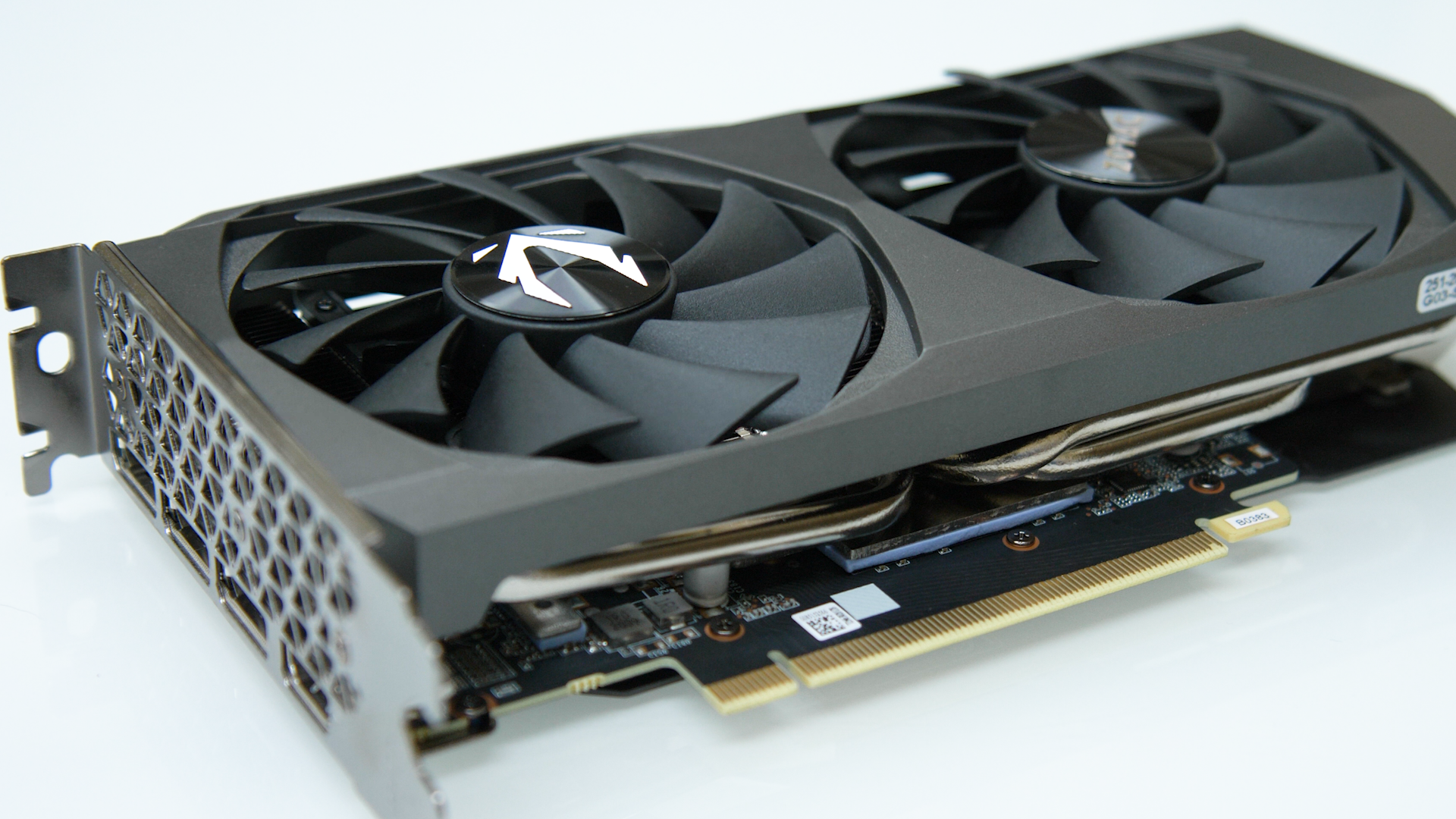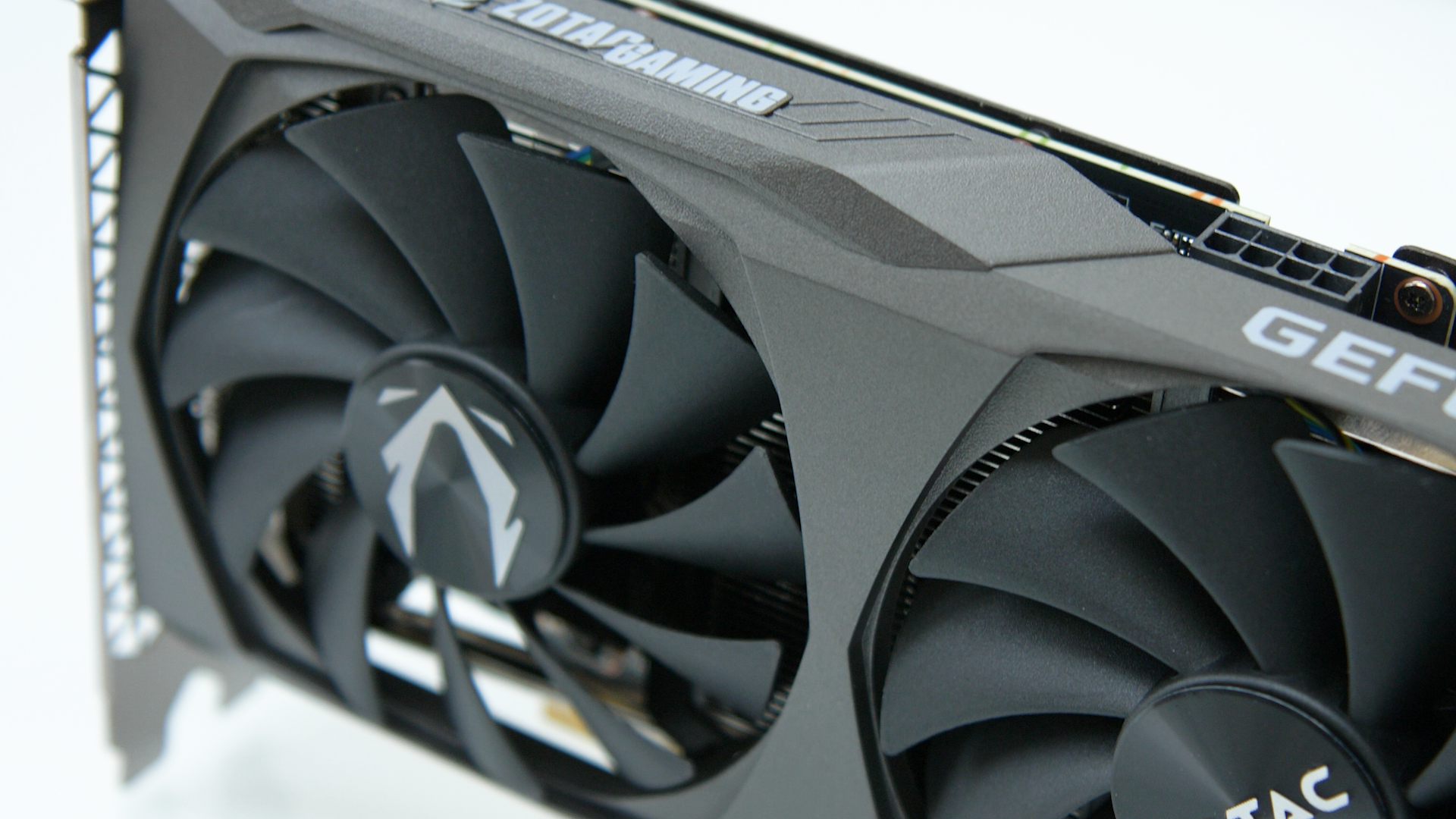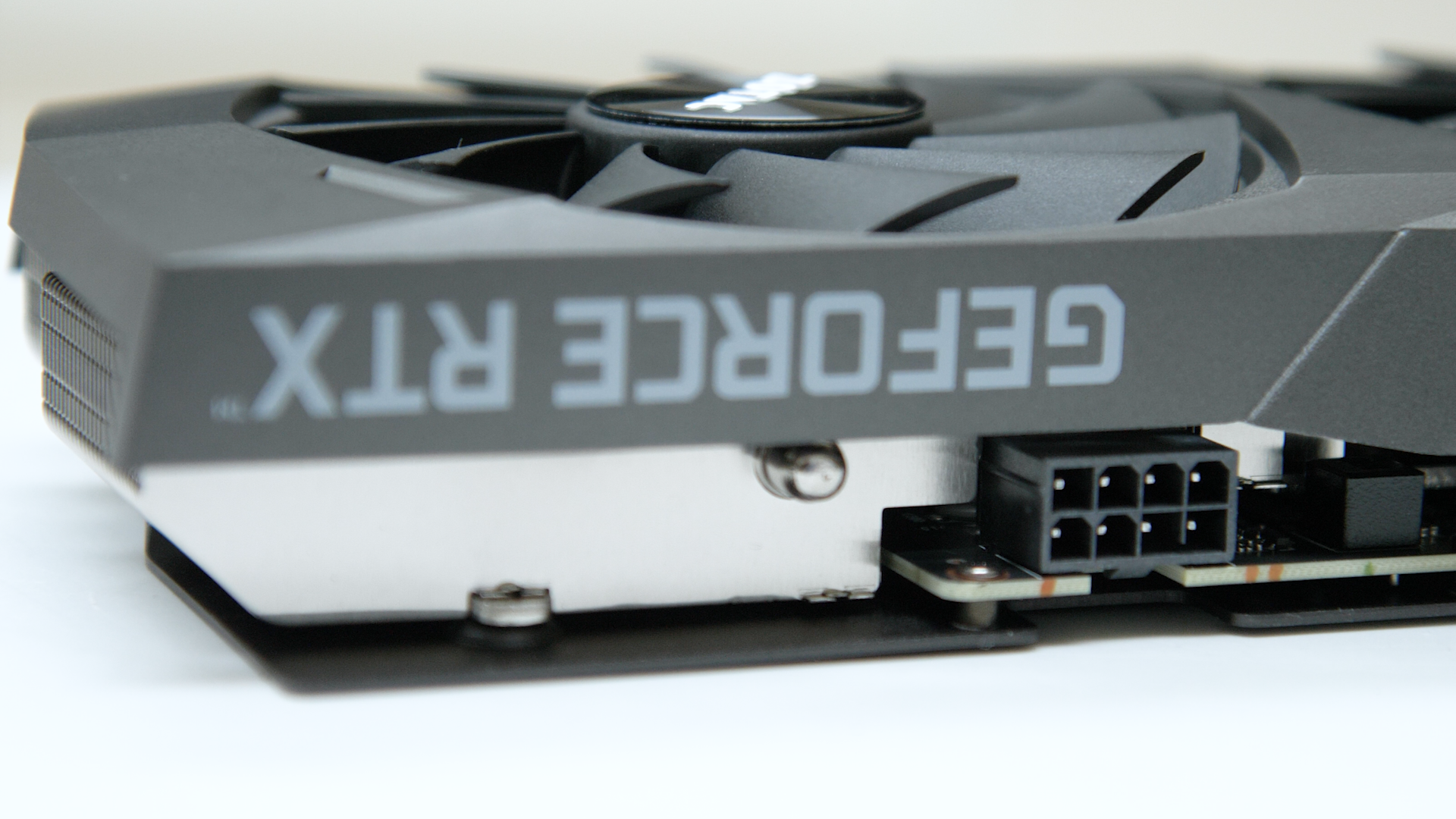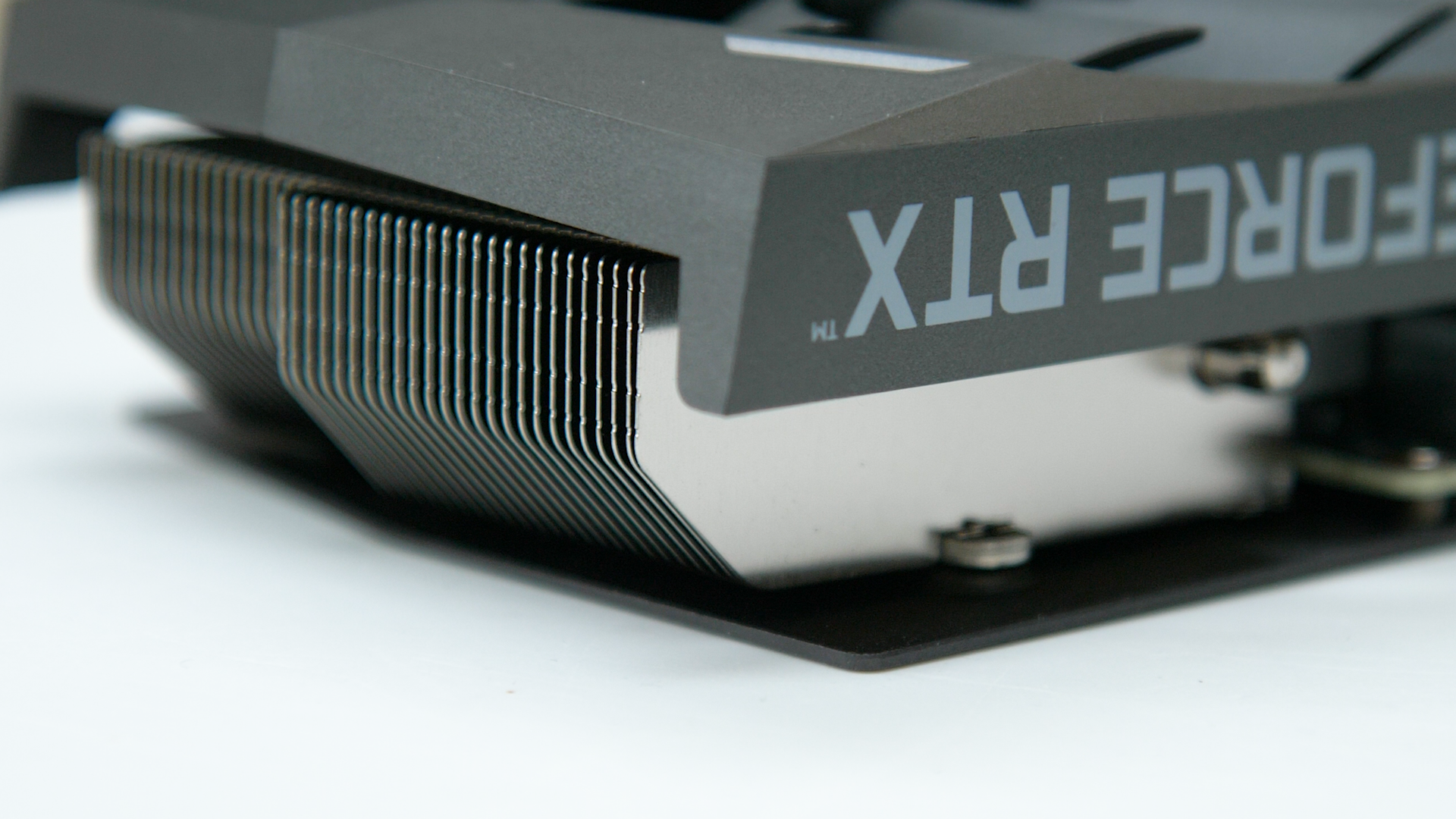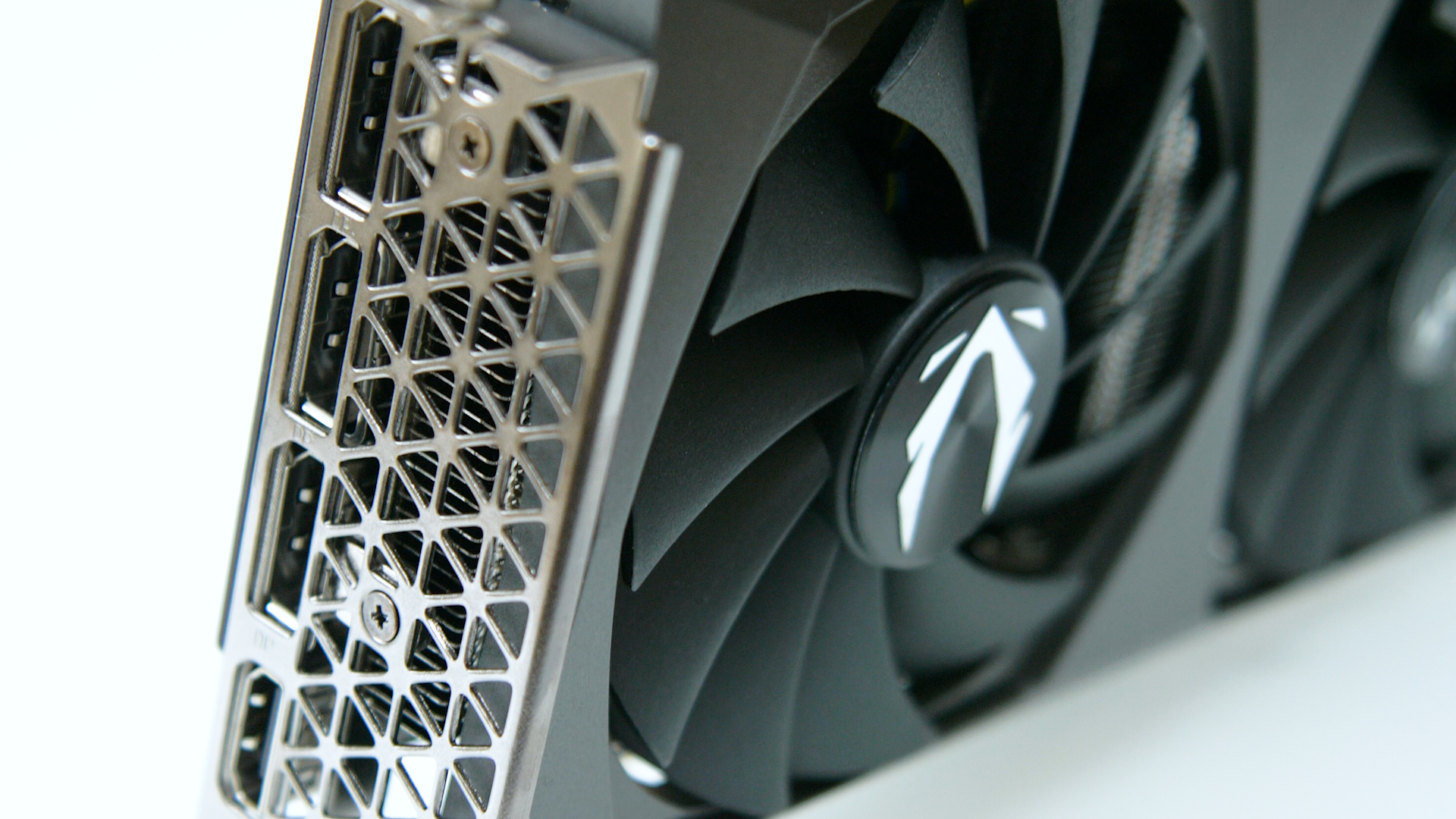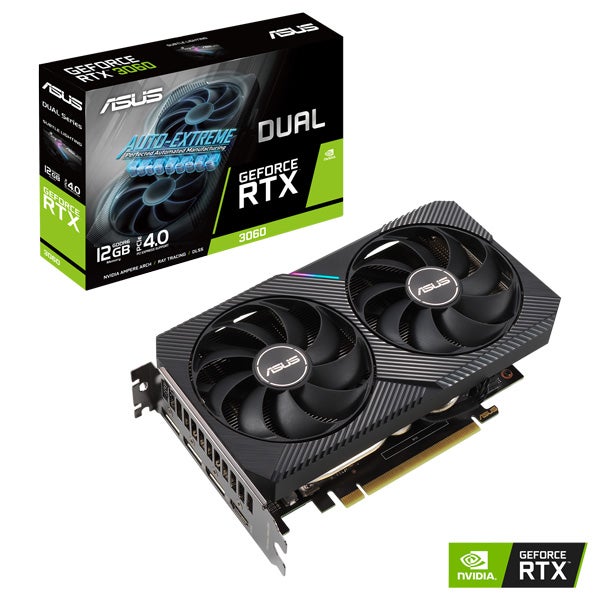For starters, let’s talk price: the 3060 is a $330/£300/€330 graphics card, which makes it $70/£70 cheaper than the RTX 3060 Ti. Ideally, that would mean that we’d see the RTX 3060 deliver a little more than 80 per cent of the performance of the RTX 3060 Ti, as we’re paying around 82 per cent of the price. Nvidia promises the performance of an RTX 2070 at the cost of an RTX 2060, and that definitely sounds like a good deal - especially when you remember that the GTX 1060 debuted at $300, and this card should offer around double the performance for only a few currency units more, inflation notwithstanding. (Of course, the graphics card market remains absolutely risible at the moment, so whether we actually see any RTX 3060 cards at their recommended retail price for longer than a split-second remains to be seen - but we’re doing our best to round up where to buy the RTX 3060 here.)
But for that money, we do get something quite special: 12GB of GDDR6 memory, compared to just 8GB on the RTX 3060 Ti and RTX 3070 - and come to think of it, that’s even more than the 10GB of GDDR6X memory on the RTX 3080! So what’s going on here? Well, the answer is pretty nerdy: it has to do with the 192-bit memory bus on the 3060. The simple explanation is that this bus is split into 32-bit chunks, each of which can access one 1GB or 2GB module of GDDR6. If you divide 192 by 36, you get six - so you can either have 6GB of RAM or 12GB of RAM, depending on whether 1GB or 2GB memory modules are used on the card. Nvidia opted for 2GB modules for 12GB in total, so here we are! 12GB still sounds like a lot for a card primarily tasked with 1080p gaming, but with competing AMD Radeon RX 6700 cards rumoured to sport the same amount, it’s clearly a fight that Nvidia didn’t want to lose.
The rest of the specs are pretty straightforward. The RTX 3060 is the first card to use Nvidia’s GA106 GPU, the smaller brother of the GA104 (used in the RTX 3060 Ti and 3070) and the GA102 (used by the 3080 and 3090). That means, comparing the RTX 3060 and 3060 Ti, we see a reduction in CUDA cores (3584 vs 4864), memory bus width (256-bit vs 192-bit) and memory bandwidth (448GB/s vs 360GB/s). To compensate, clock speeds are raised slightly (1665MHz vs 1777MHz) and power consumption is reduced by 30W (170W vs 200W).
Compared to older designs, the 3060 packs a lot of performance into relatively small die. At 276mm2, the 3060 is much smaller than the RTX 2060 (445mm2) while consuming only a shade more power and delivering much better performance. Moreover, the 3060 die is similar in size to that of the GTX 1060 (200mm2), yet it has three times as many transistors thanks to a shift from 16nm in Pascal to 8nm for Ampere.
As well as improvements to compute performance, all of the usual features of Nvidia’s Ampere architecture are present and correct, including next-generation ray tracing and tensor cores, so we can expect more noticeable performance uplifts in RT and AI accelerated workloads. We’ve covered Ampere in greater detail in our earlier RTX 30-series reviews, so let’s move onto the card’s physical design - which looks quite different to the other RTX cards we’ve tested, for a very obvious reason.
That’s because rather than benchmarking a Founders Edition card for our review, we’re instead testing the RTX 3060 Twin Edge from Zotac. In fact, Nvidia isn’t making any Founders Edition cards at all, something that they did do for the RTX 2060 that this card nominally replaces. Instead the card will launch with approximately 50 designs from the likes of Asus, EVGA, Gigabyte, MSI, Palit and of course Zotac. The Twin Edge we’re testing is perfect because it’s a more-or-less stock design, operating at the same clockspeeds as Nvidia’s baseline spec, so you should expect the same or slightly better performance if you opt for an ‘OC’ model.
The Twin Edge is a compact design, measuring a few centimetres shorter than the RTX 3060 Ti Founders Edition we tested on the last episode of Digital Foundry Reviews RTX. There are two axial fans mounted within a plastic shroud, with two big heat pipes visible beneath the cooler. The card takes a single 8-pin power input, making it a good choice for upgrading an office PC that may come with a low-wattage power supply (550W or greater is recommended). The I/O is standard for an RTX 30-series card, with a single row comprising of three DisplayPort 1.4a outputs and one HDMI 2.1 port sitting beneath a grid of ventilation cutouts.
Zotac 3060 Twin Edge (at Scan) Asus RTX 3060 Dual (at Scan) Zotac 3060 Twin Edge (at Ebuyer) Asus RTX 3060 Dual (at Ebuyer)
For more links, including for the US, please check our where to buy the RTX 3060 page! As with other RTX 30-series cards, the RTX 3060 is a PCIe 4.0 device but works in PCIe 3.0 motherboards without any loss in performance in the vast majority of gaming workloads. Another invisible feature is the AV1 decode support, which should allow sites like Twitch and Netflix to up their resolution, frame-rate and bitrate substantially at a given bandwidth - or decrease bandwidth by up to 50 per cent while keeping these metrics the same. AV1 support isn’t essential now, and is available on both AMD and Nvidia’s new cards, but it could be a nice cherry on top for anyone choosing to upgrade once it hits the mainstream. With the specs and features out of the way, let’s briefly confirm the setup of our testing rig for the games benchmarks to follow. You’ll see a few new components here if you’ve not checked out our RTX 30-series reviews yet, but for those of you that are familiar there are no surprises here. We have a Core i9 10900K is locked to a 5GHz all-core frequency and cooled by a 240mm Alpacool Eisbaer Aurora AiO - which keeps the overclocked system at around 75C under full load, and considerably colder than that the rest of the time. The 10900K is backed by an Asus Maximus 12 Extreme Z490 motherboard and two 8GB sticks of G.Skill Trident Z Royal 3600MHz CL16. Our games are run from a capacious 2TB Samsung 970 Evo Plus NVMe drive provided by Box. The whole rig is powered by a 850W gold-rated Gamer Storm power supply. With the introductions concluded, let’s get cracking with what we’re all here to see: some gaming benchmarks. Nvidia GeForce RTX 3060 Analysis
Introduction and Hardware [This Page] Doom Eternal, Control, Borderlands 3, Shadow of the Tomb Raider - Game Benchmarks Part 1 Death Stranding, Far Cry 5, Hitman 2, Assassin’s Creed Odyssey - Game Benchmarks Part 2 Metro Exodus, Dirt Rally 2, Assassin’s Creed Unity - Game Benchmarks Part 3 RTX Game Benchmarks - Control, Metro Exodus, Battlefield 5 Resizeable BAR Testing - Watch Dogs Legion, Battlefield 5, Metro Exodus Nvidia GeForce RTX 3060 - the Digital Foundry verdict
